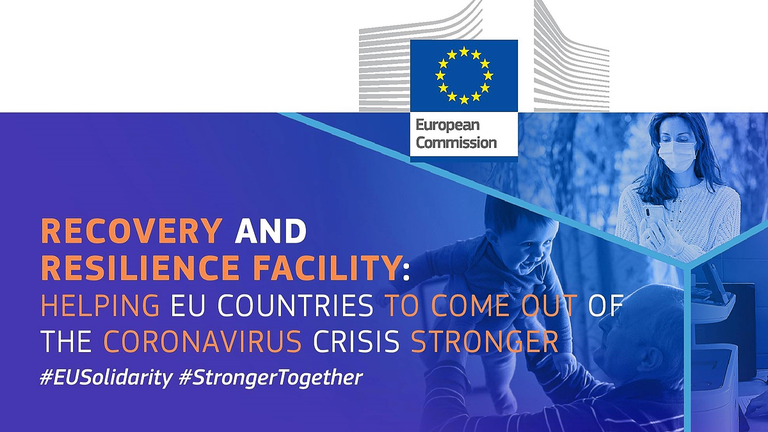Objectives and goals of the funding programme
The Recovery and Resilience Facility (RRF) aims to mitigate the economic and social impact of the COVID-19 crisis and make European economies and societies more sustainable, resilient and better prepared for the challenges and opportunities of the green and digital transitions.
EU countries are responsible for developing national recovery and resilience plans, containing investments and reforms to address the key challenges identified in the European Semester framework, and to support the green and digital transition.
This means that the RRF provides an unprecedented opportunity for cooperation among EU countries to coordinate investment efforts on common challenges including the green transition of industry, and national recovery and resilient plans need to reflect this.
Type of Programme
Recovery and Resilience Facility
Funding type/type of support
Financing (Loans/Guarantees)
Organizational level
International
Programme Focus
Competitiveness, research and innovation, Crisis recovery, Skills, Smart / digital tourism, Sustainable tourism
Programme relevant for/ target group
Academic institution, Natural persons (private individuals), SMEs and micro companies, VET Providers, Other
Geographic area
European Union
The Recovery and Resilience Facility (RRF) has a total budget of €723.8 billion.
The funding amounts can vary depending on the specific type of project and the activities involved.
Beneficiaries of the facility are EU countries and indirectly, EU citizens, public or private organisations and businesses.
Various types of projects or activities are eligible for funding under the program, including research, innovation, growth initiatives, infrastructure development, networking endeavors, and dissemination efforts.
The national recovery and resilience plans determine how the funds are allocated. Depending on the EU country, tourism is covered either by tourism-specific measures to modernise the sector or horizontal measures that are relevant to all sectors. The horizontal measures are particularly relevant under the following pillars:
- The green transition, digital transformation;
- Smart, sustainable and inclusive growth.
This is an overview of how the approved national plans contribute to the tourism ecosystem’s recovery.
The European Commission has defined seven flagship initiatives, and encourages EU countries to put forward investments and reforms in them. Several of these flagships may lend themselves to tourism investments, such as:
- Renovate: renovating tourism infrastructure to improve its energy performance (‘Nearly Zero Energy Building’), accessibility and resource management, and developing circular business models (example: for food & waste management);
- Reskill and upskill: providing trainings to tourism entrepreneurs, workers and destination managers in support of the green and digital transitions;
- Modernise: supporting the digitalisation of public administrations responsible for tourism policy. Promoting data sharing between public administrations, destination managers and businesses;
- Recharge and refuel: investing in clean mobility and improving connectivity to tourism destinations, especially tourism hotspots (examples: waterborne, buses, public transport).
The Recovery and Resilience Facility (RRF) is the centrepiece of Europe’s recovery plan, NextGenerationEU. It finances reforms and investments in EU countries from the start of the pandemic in February 2020 until 31 December 2026. Its aims are to:
- Mitigate the economic and social impact of the COVID-19 crisis;
- Make European economies and societies more sustainable, resilient and better prepared for the challenges and opportunities of the green and digital transitions.
It is relevant for all industrial ecosystems, including tourism. EU countries are responsible for developing national recovery and resilience plans, containing investments and reforms to address the key challenges identified in the European semester framework, and to support the green and digital transition.
